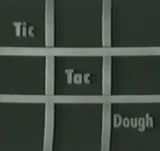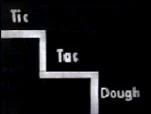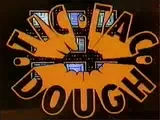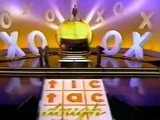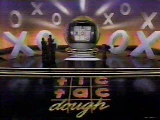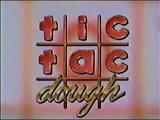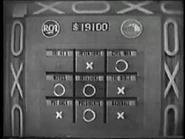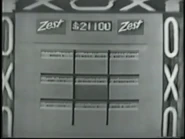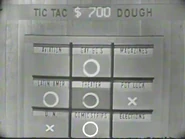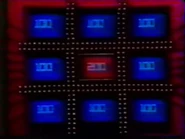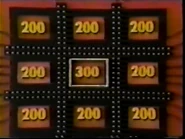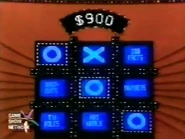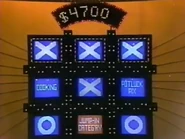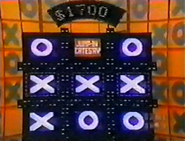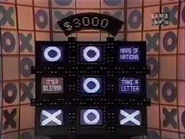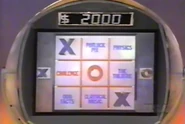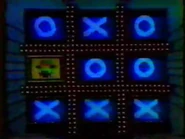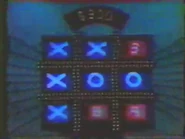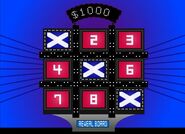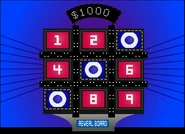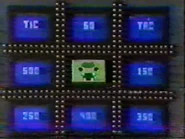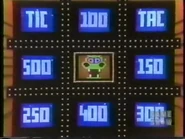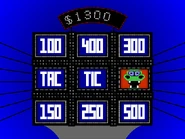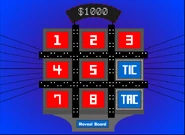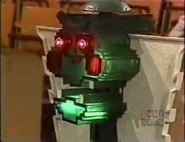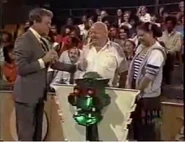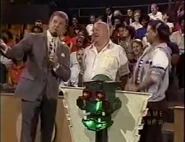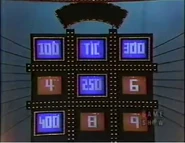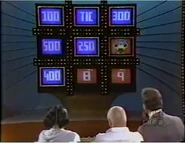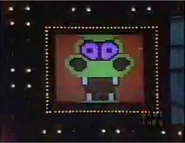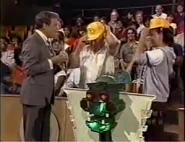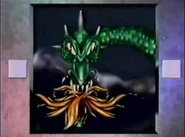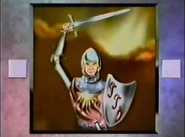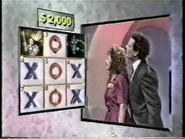| Hosts | |
| Jack Barry (daytime, 1956–1958) Gene Rayburn (daytime, 1956–1958 {Fridays only}) Bill Wendell (daytime, 1958–1959) Jay Jackson (nighttime, 1957–September 1958) Win Elliot (nighttime, October–December 1958) Wink Martindale (1978–1985) Jim Caldwell (1985–1986) Patrick Wayne (1989–1990) Tom Bergeron (Pilot, 2021) Brooke Burns (2024-present) | |
| Announcers | |
| Bill Wendell (1956–1958) Bill McCord (1958–1959) Jay Stewart (1978–1981) Charlie O'Donnell (1981–1986) Larry van Nuys (1990) Mike Darow (1980, sub) Bob Hilton (1980, sub) Art James (1980/1990, sub) Johnny Gilbert (1984, sub) | |
| Broadcast | |
| Test Episode: 7/23/1956 NBC Daytime: 7/30/1956 – 10/23/1959 NBC Primetime: 9/12/1957 – 12/29/1958Pilot: 2/1978CBS Daytime: 7/3/1978 – 9/1/1978Syndication (Daily): 9/18/1978 – 5/23/1986 (reruns aired until 9/1986)Pilot: 1989 Syndication (Daily): 9/10/1990 – 12/7/1990 (reruns aired until 3/8/1991 Unsold Pilot for NBC: 2021 GSN: 2024-present | |
| Packager | |
| Barry & Enright Productions (1956-1990) Village Roadshow Entertainment Group (2021) NBCUniversal (2021) Sony Pictures Television Studios (2024-present) | |
| Distributors | |
| Colbert Television Sales (1978–1986) ITC (1990) | |
On Tic-Tac-Dough, contestants played tic-tac-toe, trivia style. It's like Hollywood Squares but without the nine celebrities with bluff answers in their boxes.
Gameplay[]
Main Game[]
Two contestants, one a returning champion playing "X", the other the challenger playing "O", faced a tic-tac-toe style game board. On the board were nine categories in nine boxes.
The contestants in turn picked a category, then the host asked a question under that category. A correct answer won the box by placing his/her symbol in it, an incorrect answer meant the box remained unclaimed. After each turn (originally after each round), categories shuffled to different positions. The object of the game was to place three Xs or Os in a row, either across (horizontally), up and down (vertically), or diagonally.
Along the way, correct answers also added money to the pot. The outside boxes were worth a small amount, while the center box was worth even more, since the questions there were tougher; in fact they were all two-parters, and the contestant in control was given extra time to think it over.
The first contestant to get tic-tac-dough won the game, became Tic-Tac-Dough champion, took all the money in the pot, and (starting in the 1970s) went on to play the Tic-Tac-Dough bonus game. If the game ended in a tie (eight boxes for both players with no chance for a win, or the board was completely filled-up), a brand-new game was played (with new categories starting in the 1970s), and the pot continued growing from the last total amount from the previous game. Challengers ("O" players) won money for each tie should he/she lose.
NBC Version[]
The game board had big 9-sided "category rollers" (with the name of one of the nine categories on each side) used to shuffle the categories, and light boxes to light up the Xs & Os.
In the daytime show, the outer boxes were worth $100, while the center box was worth $200, for a maximum total of $1,000 per game. In the nighttime show, the outer boxes were worth $300, and the center was worth $500, for a total of $2,900. Categories shuffled after the O player's turn (that rule would carryover into the CBS daytime version and for most of the first season of the nighttime syndicated version), and contestants who chose the center box could opt for the extra time, if need be.
Champions from this version could decide to either continue playing or retire from the show. If the challenger won, the money in the pot was taken out of the former champion's grand total, potentially leaving the former champion with nothing. Losing challengers won $100 for each tie game.
There was no bonus game in this version.
CBS/First Syndicated Version[]
The well-remembered version premiered on July 3, 1978 on CBS and lasted for two months, but gave light to the syndicated nighttime version which lasted for an incredible eight years.
The game board was computerized and had nine television monitors, designed by Bob Bishop of Apple Computer, Inc., and it was driven by nine Apple II computers, each one responsible for displaying a single box of the game board, and in turn controlled by an Altair 8800 system. It was the first use of computer graphics on a television game show.
The values of the boxes in the CBS summer run were the same as the 50s NBC daytime run, but in the syndicated run, the values were upped to $200 for the outer boxes, and $300 for the center, for a maximum of $1,900 per game. Starting in 1979, Categories shuffled after each player has had a turn, and starting with this version, contestants who chose the center box were required to use the extra time, even if had or thought they had the correct answer to that point.
During the CBS run, categories could appear in either a blue background box (which meant the player who selected the category was the only one who responded to the question) or a black background box (which meant the question was a "jump-in" for both players, using the buzzers on their podiums). This did not affect the value of the questions. In addition, if a game ended in a tie, one final "jump-in" question would be asked to determine the winner of the game. The black boxes were eliminated in the syndicated run, and all questions were for just the controlling player(s) until the addition of the "Red Box" categories (see below).
Starting in Season 2 of the syndicated run, losing challengers won $250 per tie game.
Champions in the CBS run stayed on the show until they were either defeated or exceeded the then CBS winnings limit of $25,000 or more. There was no limit whatsoever in the syndicated run; they just played till they lost. However, during the 1983-1984 season, players who won $50,000 donated every dollar over $50,000 to his or her favorite charity.
For every five matches won, the champion was awarded a new car, like the Chevrolet Chevette ($3,800 in 1978, $5,600 from 1981–1982, $5,800 from 1982–1983, and $6,100 from 1983–1984), Buick Skylark ($5,200 in the first syndicated season and $5,400 in 1980), Buick Century ($5,300 from 1979–1980 and $6,500 from 1980–1981), the $12,500 AMC Eagle wagon during Martindale's final season, or the $10,500 Mazda GLC during the final (Jim Caldwell) season.
The Red Categories[]
Starting in Season 2 of the syndicated run, certain categories appeared in a red background (regular ones appeared in a blue background). Those were very special categories. Some had special questions, some could affect the outcome of the game, and others allowed both contestants to play. None of them appeared in the center box, for none of them had two-part questions.
- Secret Category – This was the show's very first red category, which first appeared in the lower right hand corner at the start, then later appeared in the bottom center at the start. The Secret Category was a mystery, for it could be any category at all. A correct answer to the question from that category doubled the total of the pot, thus making pot values occasionally worth more than $10,000, with two of the biggest pot values in the history of the series being worth $38,100 (won by Tom O'Connor), and the other pot worth $36,800 (won by Thom McKee). The largest pot in series history, $46,900, was won after the Secret Category was retired. This, of course, was inspired by the "Mystery Category" from the syndicated 70's era of The Joker's Wild.
- Jump-In Category – The host would read the question to both contestants, and the first one to buzz-in got a chance to answer. A correct answer won the box, but an incorrect answer gave the opponent a chance to answer for the box, by hearing the entire question. In the CBS run, the Jump-Ins were identified by a black background behind 1, 2, or 3 categories, and in the earlier months, jump-ins were also played if the game ended in a tie. There were two other variations of that category that will be explained later. In the second syndicated run, the Jump-In sound was a pitch lower than the sound used to stop the category shuffling.
- Challenge Category – This was where the contestant who selected the box decided to either answer the question himself/herself or challenge his/her opponent to do the same. A correct answer or a successful challenge won the box.
- Bonus Category – A three-part question was asked to the contestant in control. Answering all three parts correctly not only won the box, but also another turn. A Tic-Tac-Dough could be achieved by going for that category (either three times or twice plus one regular category) in three straight moves, causing the opponent to return to play another game.
- Opponent's Choice – So called because the opponent got to decide from which one of two categories he/she wanted the player in control to answer a question. In the final season, the contestant in control could be forced to answer two questions on one category, or one in another. This was the inspiration for the "Opponent's Choice" in Round 2 of the "Dollar" format of the 1990 era of The Joker's Wild.
- Play or Pass – This was where the contestant in control could decide, after hearing the question, to answer that question or pass it up for another question.
- Seesaw – One question with multiple answers was asked, and the contestants, starting with the player who selected the category, took turns answering the that question. Play continued until one of the contestants gave a wrong answer, repeated one, or ran out of time; if any of those things happened, the opponent won the box (the only time a contestant could win a box by default). The box could be also won by the contestant giving the last correct answer.
- Auction – A question with multiple answers was read. Then the contestants, starting with the player who selected the category, bid back and forth on how many answers they wanted to give. Bidding stopped when a contestant bid the max number, or forced the other to play. The winner of the bid had to then give the required number answers he/she bid on. Completing the bid won the box, but an incorrect answer somewhere down the line, allowed the opponent to try and give just one correct answer to win the box.
- Top Ten – A question with a number of ranked answers to it was asked. The contestant who chose the category had to then give the highest ranked answer on the list. Giving the number one answer or the higher ranked answer won the box; but an incorrect answer or a lower ranked answer gave the opponent a chance to answer. In the final season, Top Ten was renamed Top This.
- Double or Nothing – (not to be confused with the 1940s and 1950s game show of the same name) This was where a contestant could win two boxes in the same turn. A correct answer from one question earned the right to try and win another box. Answering the second question correctly won both boxes, but answering incorrectly earned nothing. The board did not shuffle in between categories. Originally, the contestant in control could decide not to go for another box, or take that risk.
- Trivia Challenge – A multiple-choice question was asked to both contestants. The one who selected the box decided to either answer the question first, or dare his/her opponent to answer. The winner of the question won the box. This category was renamed Trivia Dare during the 1984–1985 season.
- Grand Question – Replacing the Secret Category in Fall 1983, a correct answer from this question added $1,000 to the pot.
- Take Two – (Not to be confused with the long-running active pricing game from The Price is Right nor the short-lived ABC game show from 1963 of the same name) Introduced in Fall 1985, the questions from this category had two clues. The contestant who chose the box could answer from the first clue just read, or risk losing the box by hearing the second clue and giving the opponent a chance to answer.
- It’s a Dilemma – In this category, the first clue to the correct answer was read, then the contestant who selected the box chose how many out of the remaining five to hear; however, the opponent had to then decide who should answer the question. This category appeared during the Jim Caldwell season.
- Number Please – (Not to be confused with the short-lived ABC primetime game show from 1961 of the same name) Introduced in Fall 1985 and played like the Card Sharks questions, a question with a numerical answer was asked. The contestant who selected the box had to then take a guess, then the opponent guessed whether the actual number was higher or lower than the first contestant's guess. The actual number was then revealed, and a correct higher or lower guess won the box for the opponent, but an incorrect higher or lower guess or guessing the number on the nose won the first contestant the box.
- Showdown – (not to be confused with the short-lived 1966 NBC daytime game show nor the 1973 & 1974 pilots of The Big Showdown of the same names respectively) Introduced during the Caldwell season, a series of two-part jump-in questions were asked. The first contestant to buzz-in had a chance to answer first, then the opponent got to answer. Play continued until one of them made a mistake, causing the opponent to win the box. On the 1990 version, the player who selected that category answers first.
- Three to Win – A series of Jump-in questions were asked to both contestants, and the first one to answer three questions correctly won the box. This category was introduced in the fall of 1985.
Second Syndicated Version[]
The game board was completely computer generated, and displayed on one projection TV monitor which was housed inside a giant ball.
Most of the red categories were revived for this version. The Jump-In questions were either one of four W-question words (who, what, where, and when) or a general subject.
The box values were $1,000 for the center, and $500 for the outer boxes. Unlike prior versions, the pot did not carry over into the next game; instead it was reset, and values of all boxes were increased by $1,000/$500.
There was no money offered to losing challengers for tie games.
Champions stayed on the show till they won 15 matches or were defeated, with the most won being 12.
Contestants stopped the shuffling of the categories themselves by hitting their buzzer, which was also used on the "Jump-In" questions (albeit a pitch lower). Speaking of which, unlike the classic version, the categories shuffled before each turn.
2021 Pilot Version[]
The front game was now self-contained which divided into 2 rounds. Round 1 has the outside boxes worth $500 and the center box is worth $1,000. The first contestant to get Tic-Tac-Dough wins a $1,000 bonus. Round 2 doubles the money ($1,000 for the outside boxes, $2,000 for the center). The player with the most amount of money wins the game and advances to the bonus round.
Bonus Round: Beat the Dragon[]
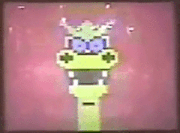
Beware The Dragon. Find him, and your bonus cash is burned.
In the bonus game that started in 1978, winning contestant faced the board to which its nine boxes were numbered 1-9. Behind all but one of the numbers were either money amounts or various X's & O's, and some "WIN" symbols. Behind that one remaining number was a "dragon" icon. The winning contestant's job was to meet a certain goal before running into the mean green dragon. Every safe square usually earned money, which the contestant could stop and keep if he/she wished, or risk it to keep playing. Winning the bonus round earned a cash prize of at least $1,000 and a prize package worth between $2,000-$5,000. Finding the dragon ended the game and "burned" the money.
1978–1986 Bonus[]
The bonus round from the first syndicated version had two different formats.
The CBS Bonus[]
In this bonus game, the board now consisted of eight tic-tac-toe symbols (four Xs & four Os) and only one dragon. The Xs & Os were jumbled up making sure that there was only one way to win. The winning contestant started calling off numbers, and for each symbol found (either X or O), $150 was added to the pot. Later in the run, if the contestant found that one Tic-Tac-Dough, his/her cash total was upped to $1,000, unless of course the player uncovered a total of seven boxes (for $1,050) or all eight (for $1,200).
The Syndication Bonus[]
The board now had six money amounts ranging from $100 to $500 (originally $50 to $500), one square each marked TIC and TAC, and of course, the dragon. The object of this game was to uncover money amounts and try to reach $1,000 or more, up to a max of $1,450 (exactly $1,000 without going over for a brief time in 1983) or find the TIC & the TAC (which bumped the total to $1,000).
"Dragon Finder" Audience Game[]
For a time in 1983, an audience game called "The Dragon Finder" was instituted; it was played whenever the bonus round was won or a contestant stopped early. Instead of uncovering the board immediately to find the dragon, a randomly selected member of the studio audience was called upon to expose where the dragon was hidden behind the remaining numbers. The contestant in control chose a number from one of the remaining ones on the board to uncover the dragon. If that contestant failed, another audience member was chosen to do the same. Originally, finding the dragon was worth a flat $250. Later in the game's run, $50 was added for each unsuccessful pick. Also later on, each audience member who played received a Dragon Finder cap, which was introduced on a Friday "Hat Day" the week before the audience game began. (see below).
For a brief period, two members of the studio audience played the "Dragon Finder" game. They were invited to expose where the dragon was hidden behind the remaining numbers. The contestants took turns choosing the remaining numbers on the board to uncover the dragon.
1990–1991 Bonus[]
The 1990s bonus game was played the same way as the CBS bonus, except with these differences:
- The contestant had to find the Tic-Tac-Dough of the symbol of his/her choosing.
- Finding the selected symbol won $500 to the contestant, with the money doubling for each subsequent symbol. Finding the other symbol was worth nothing.
- A knight known as the "dragon slayer" was also added to the board, to go with the dragon. While the dragon continued to burn all the money earned by the contestant when found, the dragon slayer triggered an instant win, if found; finding him on the first pick was worth $1,000.
- The champion used a microphone-like device to stop the shuffling of the X's and O's on the board, in which the squares were numbered, like that of the previous run. However, when a main game went immediately to the bonus game, viewers could see the main game board flip over to reveal the bonus game board.
Finding the Tic-Tac-Dough with the chosen symbol or finding the dragon slayer doubled the cash (up to $8,000), and won the prize package. If the dragon was found, you know what he does. Later on in the run, the dragon slayer and dragon would each introduce themselves by rapping.
2021 Pilot Bonus[]
Each box on this board hides between $5,000 to $25,000. Each correct answer adds the exposed money to his/her bank. Getting a Tic-Tac-Dough wins all the money in the bank. Find the "Dragon" and the winning contestant has to answer a question right to continue before the game is over and he/she forfeits his/her money.
Special Tournaments (Martindale era only)[]
From Season 2 to 1983, the show held special tournaments featuring eight players usually competing for charity, with no pot in any game (nor red categories), and the loser playing the bonus for consolation money (with a little more awarded for hitting the dragon). The final match was best-of-three to determine the winner of the grand prize, while the runner-up received a smaller prize. If any game ended in a tie, the contestants were usually asked a question with multiple answers (similar to the Seesaw category), with the first to make a mistake automatically losing.
Over-80 Tournaments[]
In Seasons 2 & 3, the participants were at least 80 years of age competing for themselves, as well as charity. The bonus was also played for $2,000 (with $500 added for hitting the dragon). In the end, the grand champion split $100,000 with their charity, while the runner-up received $5,000 for themselves. Unlike later tournaments, if a game ended in a tie, the contestants switched places for a new game.
Celebrity Tournaments[]
Between Spring 1981 and Spring 1983, the tournaments had a certain theme (sports figures, soap opera stars, Miss America and Classy Guys), each with eight celebrities of that theme participating. The bonus was played for $2,000 in the quarter-finals, and $3,000 in the semi-finals (with $500 added for hitting the dragon either way). In the end, the Grand Champion received $10,000 and the runner-up collected $5,000.
Tournament of Champions[]
In 1983, the show invited eight of its (at the time) all-time highest winners, all of whom earned a collective total of $1,248,500, back to play for charity. The bonus was played for $5,000 (with hitting the dragon adding $1,000). In the end, the Grand Champion earned $50,000 while the runner-up won $25,000.
Rebroadcasts[]
Tic Tac Dough (Martindale & Caldwell Versions) was shown on Game Show Network before, but some seasons have not been rebroadcast. GSN's most recent lease of the series was the full 1979-80 and early 1981 season, ending to the episode in which Thom McKee was defeated before reverting back to the 1979-80 season premiere. That lease ran from January 2008 to January 2009.
The 1990 version was reran on USA Network after cancellation.
On March 2, 2020, GameTV in Canada started airing reruns of Tic Tac Dough, beginning early in the final season, which was hosted by Jim Caldwell.
Rating[]
Taping Locations[]
Ziegfeld/Colonial Theatres, New York City, NY (1956–1959)
CBS Television City, Hollywood, CA (June 1978–December 1980)
KCOP-TV Studios, Los Angeles, CA (1981–1984; 1985–1986)
The Production Group, Hollywood, CA (1984–1985)
Music[]
Paul Taubman (1956–1959)
Hal Hidey "Crazy Fun" (1978–1986)
Henry Mancini (1990)
In Popular Culture[]
In 2006, Tic Tac Dough was ranked #32 as one of The 50 Greatest Game Shows of All Time, the special was hosted by Bil Dwyer.
In a 2019 episode of The Goldbergs called "I Lost on Jeopardy!", a brief clip of Tic Tac Dough can be seen in the opening intro.
ADDITIONAL NOTE: Other game shows that were also mentioned were: The New Newlywed Game, Wheel of Fortune, Family Feud (Dawson), TTD's companion show, The Joker's Wild, Press Your Luck and of course Jeopardy!.
Trivia[]
- Production on the Syndicated run began on August 12, 1978.
- Although Seasons 1-5 each had 195 episodes, the final Season had 175. It's unclear how many Seasons 6 and 7 each had.
- Wink Martindale was originally tapped to host its sister show, The Joker's Wild, but he wound up hosting Gambit instead. However, he did host The Joker's Wild when it was a CD-i video game for Philips Interactive in 1994. Additionally, the dragon did appear in the 1994 CD-i video game The Joker's Wild Jr. hosted by Marc Summers despite not appearing on it's sister show nor its spinoff Joker Joker Joker.
- Thom McKee, a lieutenant pilot in the United States Navy, was the biggest winner in the history of Tic Tac Dough, having won $312,700. His wife Jenny, whom he just married by the time he came to the show, assisted him frequently in playing the Beat the Dragon bonus game.
- On Friday shows, Wink would always wear a viewer submitted hat. This day would be referred to as "Hat Day".
- GSN ranked Tic Tac Dough #32 as one of The 50 Greatest Game Shows of All-Time in 2006. The special was hosted by Bil Dwyer.
- Henry Mancini, the 1990 version's theme composer, is best known as the composer of the Pink Panther theme.
- Despite not getting picked up, this was Bergeron's second game show involving a tic-tac-toe format. 23 years ago, the first was the revival of Hollywood Squares (later known as H2) in 1998 until 2004.
- It has been announced by veteran game show announcer Randy West that GSN is developing a reboot of Tic Tac Dough.[1][2]
- On April 2, 2024, it has been announced that Brooke Burns will be hosted the new show, slated for an August premiere.[3]
International versions[]
Countries have aired their own versions of Tic Tac Dough include:
- Australia
- Germany
- Honduras
- Indonesia
- Spain
- United Kingdom
Additional Pages[]
Tic Tac Dough/Quotes & Catchphrases
Tic Tac Dough/Merchandise
Tic Tac Dough/Picture Gallery
Tic Tac Dough/Video Gallery
Links[]
The Unofficial Tic Tac Dough Supersite
Travis Eberle's Rules for Tic Tac Dough
Rules for Tic Tac Dough at the Game Show Temple
Tic Tac Dough @ Tim's TV Showcase
Rocco Thibodeau's Tic Tac Dough Page
Streetcar Mike's Tic Tac Dough Page
The Tic Tac Thom Mini Page
Beat the Dragon Flash Game
YouTube Video[]
Intro to 50s Tic Tac Dough
Pilot Intro to 90s Tic Tac Dough
